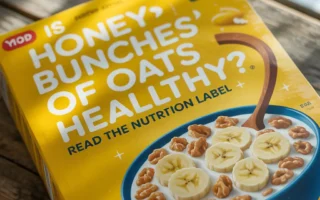Costco sells a ready‑to‑eat shrimp cocktail that sits in the refrigerated deli case. Shoppers grab it for parties, post‑work snacks, or quick lunches. The tray holds cooked, tail‑on shrimp, a lemon wedge, and a plastic cup of cocktail sauce. It looks fresh and feels convenient. But nutrition matters more than looks. This article reviews every nutrient on the label. Sentences stay short. Voice stays active. Facts come straight from current packaging.
Serving size and calories
The label sets one serving at three ounces (85 g)—about four medium shrimp with a teaspoon of sauce. That portion supplies 80 calories. Two scoops double the calories. The tray contains about six servings, so finishing it alone adds up fast.
Protein powerhouse
Shrimp is lean. One serving delivers 14 g protein. That equals a medium egg plus two whites. Protein repairs tissue and curbs hunger. Athletes and dieters like that ratio. Eat two servings and gain twenty‑eight grams without heavy calories.
Fat content
Shrimp contains almost no fat; the sauce adds trace canola oil, yet the total stays under one gram. Saturated and trans fats read zero. Low fat benefits heart health and keeps calories low. It also means less satiety, so pair the shrimp with healthy fats if needed.
Carbohydrates and sugar
Pure shrimp has no carbs. Cocktail sauce changes that. A serving shows 5 g carbohydrate, mostly from tomato paste and sugar. That amount equals one teaspoon of sugar. The load stays small for low‑carb plans. Cut the sauce in half to slash carbs further.
Sodium spotlight
Seafood processing and sauce drive sodium upward. A four‑ounce portion shows 480 mg sodium on recent nutrition panels. That scales to roughly 360 mg for the three‑ounce reference serving. That covers about fifteen percent of a day’s limit. Two generous scoops raise intake quickly. People with hypertension should keep score or rinse the shrimp briefly to remove surface salt.
Cholesterol check
Shrimp naturally holds cholesterol. A three‑ounce serving provides about 75 mg. That equals one quarter of the daily ceiling. Research shows dietary cholesterol affects blood levels less than once believed, especially when saturated fat stays low. Still, heart patients should watch cumulative intake.
Vitamin and mineral profile
Shrimp shines in micronutrients. One serving supplies more than half a day’s selenium, plus ample iodine, vitamin B‑12, zinc, and phosphorus. The sauce contributes small traces of vitamin C from tomatoes and lemon. These nutrients support immunity, thyroid health, and energy metabolism.
Omega‑3 contribution
Shrimp hosts omega‑3 fatty acids, though at lower levels than salmon. Each serving gives roughly 200 mg combined EPA and DHA. That supports brain and eye health. Combine shrimp with walnuts or a fatty‑fish dinner to meet the daily omega‑3 goal.
Macronutrient balance
Calories come 74 % from protein, 26 % from carbohydrate, and 0 % from fat. That macro split suits high‑protein weight‑loss plans and post‑workout recovery. The low fat and moderate carbs mean blood glucose stays stable.
Glycemic impact
Five grams of carbs plus protein produces a negligible glycemic load. People with diabetes can enjoy the shrimp cocktail without major glucose spikes. Always test personal response to confirm.
Allergen alert
Shrimp counts as a top‑eight allergen. The tray may also contain traces of soy in the sauce. Shellfish‑allergic diners must avoid it completely. Costco labels allergens clearly, yet cross‑contact can still occur at home gatherings.
Ingredient list unpacked
The shrimp ingredients read: shrimp, water, salt, citric acid. The sauce lists tomato concentrate, sugar, horseradish, vinegar, salt, onion, lemon juice, and spices. No artificial dyes appear. The preservative list stays short.
Portion realism
Few people stop at three ounces. Many eat six to nine ounces in one sitting. That equals two to three servings—160 – 240 calories, 10 – 15 g carb, and over 40 g protein. Sodium exceeds 700 mg, while cholesterol nears 200 mg. Measure portions or share the tray.
Satiety strategy
Protein fills you quickly but may fade without fat and fiber. Add avocado slices, olives, or a handful of almonds for healthy fat. Serve the shrimp over crisp lettuce or quinoa salad for fiber and complex carbs. Those additions extend fullness and diversify nutrients.
Dietary fit
Keto and low‑carb: fits well. Low‑fat: perfect. High‑protein: excellent. Paleo: acceptable if you tolerate minimal sugar. Whole30: sauce disqualifies due to sugar, yet shrimp alone passes. Low‑sodium: moderate caution. Gluten‑free: naturally free, but check sauce for cross‑contamination.
Comparison with other appetizers
Four fried mozzarella sticks supply 330 calories and 25 g fat. One slice of pepperoni pizza provides 285 calories, 12 g fat, and 640 mg sodium. Six ounces of Costco shrimp cocktail deliver 160 calories, under 1 g fat, and 720 mg sodium, while protein triples that of pizza. Shrimp ranks healthier.
Cost efficiency
The tray usually costs about $9.99 per pound. That equals roughly sixty‑two cents per ounce. Comparable deli meats run higher with more fat and additives. Protein cost per gram stays favorable.
Environmental note
Farmed shrimp can harm mangroves and biodiversity. Costco states that it sources from certified farms with responsible feed and water practices. Still, wild‑caught U.S. shrimp carries lower environmental risk. Balance convenience with sustainability goals.
Storage and safety
The shrimp arrives pre‑cooked and chilled. Keep it below 40 °F. Eat within three days of purchase. Freeze leftovers in a flat layer for up to two months. Thaw overnight in the fridge and consume within twenty‑four hours.
Food safety reminders
Do not leave the tray at room temperature longer than two hours. On hot days, set the dish over ice. Discard shrimp that smells fishy, feels slimy, or shows dull color.
Creative serving ideas
Stir chopped shrimp into whole‑wheat pasta with garlic and olive oil. Layer shrimp over mixed greens with citrus vinaigrette. Fill lettuce cups with shrimp, diced mango, and jalapeño. Grill skewers briefly for a smoky twist. Blend leftover sauce with Greek yogurt to make tangy salad dressing.
Ways to lower sodium
Rinse shrimp under cold water for ten seconds to wash off brine. Make homemade cocktail sauce with reduced‑salt ketchup and extra horseradish. Squeeze fresh lemon to enhance flavor without sodium.
Boosting nutrient density
Add diced avocado for monounsaturated fat. Sprinkle hemp seeds for extra omega‑3s. Include steamed edamame for fiber. Toss in chopped bell pepper for vitamin C and color.
Weight‑loss potential
High protein, low calorie, and low fat make shrimp cocktail a useful tool for weight control. Pair it with vegetables to create large, satisfying meals under three hundred calories. Monitor sauce intake to avoid hidden sugar.
Heart‑health angle
Shrimp’s cholesterol once worried cardiologists. New research emphasizes overall dietary patterns. Shrimp’s low saturated fat and hearty protein support heart health. Limit portion sizes if you need drastic cholesterol restrictions.
Muscle recovery
Protein and essential amino acids repair muscle fibers. Post‑workout, combine shrimp with a banana or brown rice cake for glycogen replenishment. The quick‑digesting protein enters the bloodstream fast.
Balanced meal example
Lunch idea: one serving shrimp cocktail, one cup steamed broccoli, half an avocado, and one cup cooked quinoa. Total: about 460 calories, 40 g protein, 16 g fat, 45 g carbs, 720 mg sodium. This meal meets macro targets and micronutrient diversity.
Shelf‑life tips
Store the tray in the coldest part of the fridge. Open just before serving. After opening, press plastic wrap against exposed shrimp to limit air contact. Use within forty‑eight hours for peak taste.
Zero‑waste option
Save the empty tray and cup for storing homemade dips. Compost lemon rind. Reuse the sturdy lid for picnic transport.
Sustainable sauce swap
Blend low‑sugar ketchup, prepared horseradish, grated garlic, Worcestershire sauce, and lemon juice. Control sweetness and salt. Skip single‑use plastic cups.
Buyer checklist
Check the “use by” date before purchase. Pick trays with clear liquid and firm shrimp. Avoid packages with cloudy brine or broken tails. Keep the container level to prevent sauce spills.
Kid appeal and portion tips
Kids enjoy the mild flavor and fun shape of shrimp. Offer smaller portions, because young palates may find cocktail sauce spicy. Present plain shrimp with a squeeze of orange instead of lemon. Teach children to remove tails safely. The protein supports growth while low fat prevents excess calories. Always check for shell fragments before serving.
Tray sizes and seasonal variation
Costco sells two formats. The year‑round deli tray weighs about twenty‑four ounces. Holiday party platters weigh four pounds and include extra sauce cups. Nutrition per serving stays unchanged, but total sodium in the larger platter climbs above five thousand milligrams. Factor that into menu planning. Buying frozen Kirkland shrimp and making homemade sauce can reduce cost and packaging while controlling seasoning.
Final verdict
Costco shrimp cocktail delivers lean protein, low calories, and helpful micronutrients in a grab‑and‑go tray. Its drawbacks are moderate sodium, added sugar in sauce, and environmental concerns. Measure servings, pair with fiber and healthy fat, and enjoy it as part of a balanced diet. When you know the facts, you eat smarter. This shrimp cocktail can fit many nutrition goals, provided you use it wisely.




